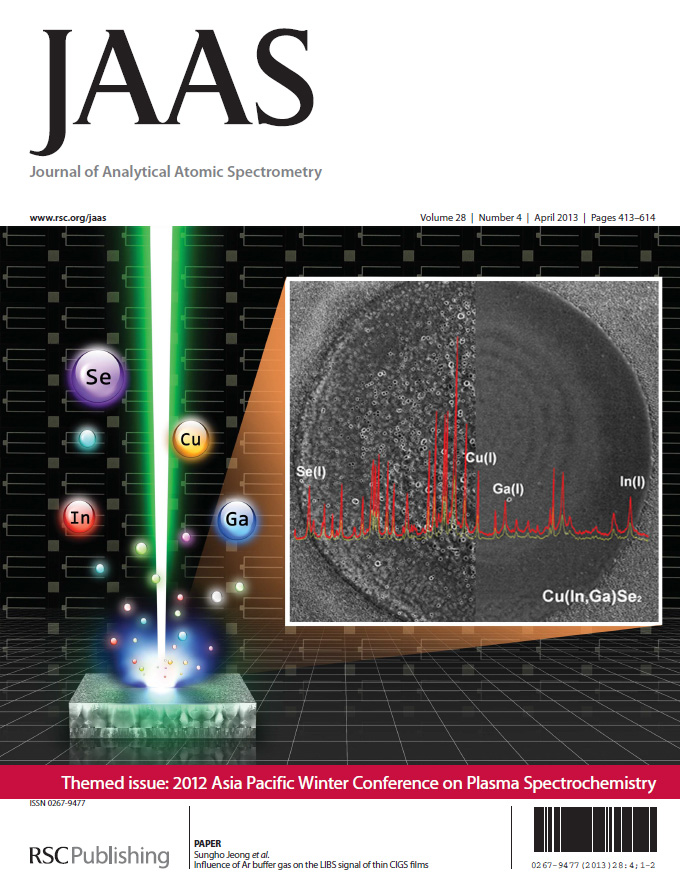Media Center
A multimedia mosaic of moments at GIST
GIST Excellence
Development of real-time quality monitoring technology for thin-film solar cells
- 김슬혜
- REG_DATE : 2013.04.03
- HIT : 836
Development of real-time quality monitoring technology for thin-film solar cells - Research by Prof. Jeong, Sung Ho and Ph.D. Kim, Chan Kyu at the School of Mechatronics is published as the cover article of JAAS. - Using argon gas, the new technology will enhance accuracy in thin film composition analyses and monitor defect rates in real time. A group of domestic researchers developed a technology to monitor the chemical composition of thin films in real time during the production process of CIGS thin-film solar cells* which are touted to be the next generation of solar cells. Chemical composition is a key variable to efficiency and therefore this new technology is expected to be useful in the quality and process control of CIGS thin-film solar cells. * A CIGS thin-film solar cell is a solar cell which absorbs solar rays and generates electricity. Unlike silicon solar cells, it absorbs solar energy through the 1~2 μm thin-films and “CIGS” stands for the initials of four elements of thin films; Cu, In, Ga and Se. ○ This research was led by Prof. Jeong, Sung Ho and Ph.D. Kim, Chan Kyu (primary author) at the School of Mechatronics in Gwangju Institute of Science and Technology (GIST, President Young Joon Kim) and was sponsored by the Senior Researchers Support Project (Take-Off) of the Ministry of Science, ICT & Future Planning and National Research Foundation of Korea. The research findings were published as the cover article in the latest issue of Journal of Analytical Atomic Spectrometry dated March 14th. (Title: Influence of Ar buffer gas on the LIBS signal of thin CIGS films)

